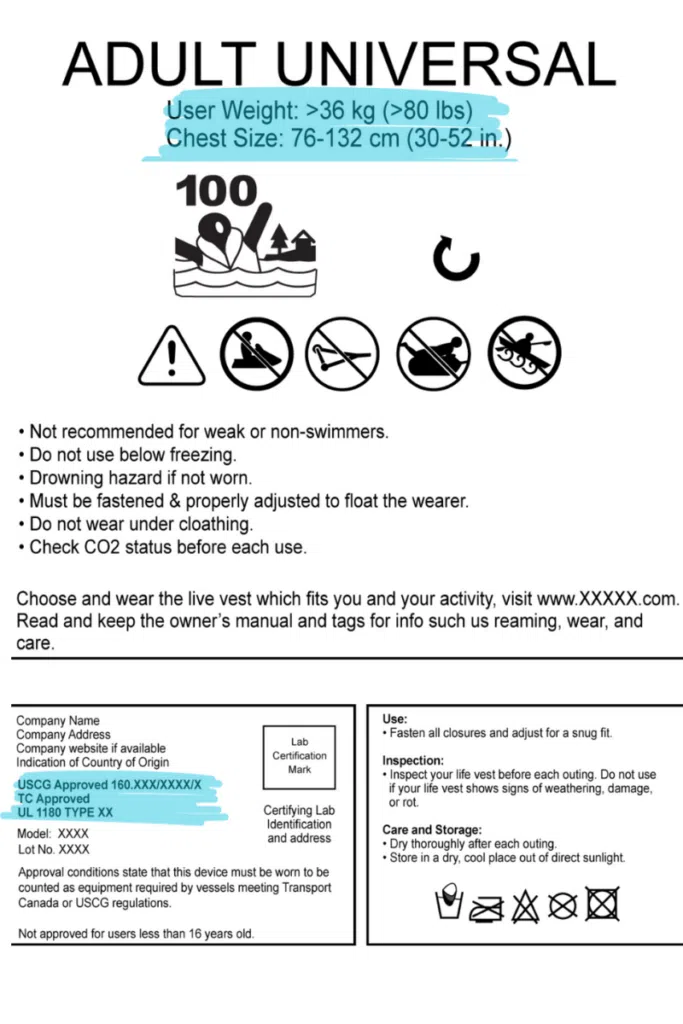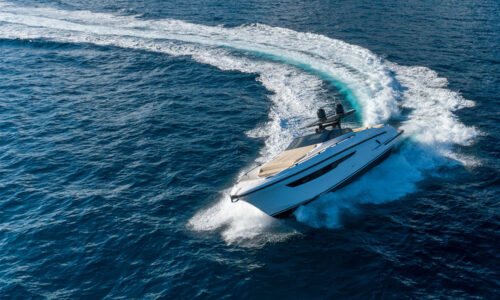What Life Jackets are Approved by the Coast Guard?
Coast Guard approved life jackets can be identified by their label indicating they meet USCG standards, including the type of jacket, size, and buoyancy rating. Look for this label to ensure the life jacket provides the required safety and compliance.
Key Takeaways
- Always check for a label indicating the life jacket meets USCG standards, including type, size, and buoyancy rating.
- Know the types—Type I, II, III, IV, and V—each designed for specific water activities and conditions.
- A Coast Guard-approved life jacket ensures you meet safety regulations and enhances your protection on the water.
Table of Contents
- Intro to U.S.C.G. Approved Life Jackets
- How to Choose a PFD
- New PFD Labels
- Old PFD Labels
- Where to get USCG PFDs
- Serviceable PFDs
Life jackets, a specific type of PFD (Personal Flotation Device), are essential safety equipment for anyone engaging in water activities, providing buoyancy and reducing the risk of drowning. The U.S. Coast Guard sets and enforces rigorous approval standards.
Choosing a USCG-Approved PFD
When picking a Personal Flotation Device (PFD), boaters must read its label. The label has information that helps select, fit, and use the PFD for any boating activity. Here’s what to look for on the PFD label:
Approval: The PFD must be approved by the United States Coast Guard (USCG).
Activity: The PFD should be the right type for what you plan to do with it.
Fit: It should be designed for the person’s size and weight.
Always check the PFD label for this information to make sure you’re choosing, fitting, and using it correctly for your boating activities.
New PFD Label
On the labels of new PFDs, you’ll see three types of symbols:
Performance Rating Symbols – You’ll see the numbers 50, 70, 100, or 150 with a picture next to them. These numbers show how buoyant the PFD is. The bigger the number, the more it helps you float.
50 & 70-rated PFDs are intended for calm waters, near shore, and have less buoyancy.
100-rated PFDs are intended for near-shore and have more buoyancy than level 50 and 70.
150-rated PFDs are intended for offshore with the most buoyancy.
Turning Performance Icons – On new PFDs, you might see a symbol that looks like a curved arrow or a half-circle. This symbol means the PFD can turn a person face up in the water without needing to move or swim.
Non-intended Use Icons – These icons show activities for which the PFD should not be used. If you see icons of different water activities with lines through them, it means that this particular PFD is not suitable for those activities.

Old PFD Label
Older PFDs (Personal Flotation Devices) come in five types, each designed for different situations:
Type I PFD: Off-Shore Life Jackets – These offer the most help with floating and are best for open, rough, or far-off waters where help might take a while to arrive. They’re made to turn an unconscious person face up in the water. Adult sizes give at least 22 pounds of buoyancy, and child sizes give at least 11 pounds.
Type II PFD: Near-Shore Vests – These are for calm, inland waters. They turn most unconscious people face up, but it’s not guaranteed.
Type III PFD: Flotation Aids – Good for general boating or specific water activities, these are comfy to wear for a long time. They won’t turn an unconscious person face up in the water. The wearer needs to move to float face up.
Type IV PFD: Throwable Devices – These are meant to be thrown to someone in the water during a man-overboard situation.
Type V PFD: Special-Use Devices – These are for specific activities or conditions. The wearer needs to follow certain instructions to make sure they work right.

Where can you find U.S. Coast Guard-Approved Life Jackets?
Buying
Finding U.S. Coast Guard-approved life jackets for purchase is relatively straightforward. Most major retailers that sell water sports and boating equipment carry a range of USCG-approved life jackets. You can find these life jackets in stores such as Walmart, Target, and sporting goods stores like Dick’s Sporting Goods and Bass Pro Shops. Additionally, many online retailers, including Amazon and specialized boating websites, offer a wide selection of Coast Guard-approved life jackets. When shopping, always check for the Coast Guard approval label inside the jacket to ensure it meets USCG standards and includes information about the type, size, and buoyancy rating.
Renting
If you don’t own a life jacket, renting one can be a convenient option. Many marinas, boat rental shops, and water sports centers offer U.S. Coast Guard-approved life jackets for rent. These facilities ensure their rental equipment meets safety standards and is well-maintained. Renting is an excellent choice for occasional boaters or visitors who don’t want to invest in a life jacket but still need the safety and compliance provided by USCG-approved equipment.
Borrowing
Borrowing a life jacket from a life jacket loaner station is another great option, especially for those who might need one for a short time. Many boating safety organizations and local authorities have established life jacket loaner programs at marinas, boat ramps, and popular water recreation areas. These stations provide U.S. Coast Guard-approved life jackets free of charge to ensure everyone has access to necessary safety equipment. Always check the condition and label of borrowed life jackets to confirm they meet USCG standards before use.
When Not to Use a USCG-Approved Life Jacket
Even if a life jacket is U.S. Coast Guard-approved, it may not always be safe to use. A life jacket is considered unserviceable and should not be used if it shows signs of significant wear or damage. Here are key indicators to look for to ensure a life jacket is serviceable:
Signs of Unserviceable Life Jackets
- Rips, Tears, and Holes: Inspect the fabric for any rips, tears, or holes that could compromise the integrity of the life jacket.
- Damaged Straps and Buckles: Check that all straps and buckles are intact, fully functional, and securely attached to the jacket. Any broken or missing components render the jacket unsafe.
- Compressed or Hardened Foam: Feel the foam inside the life jacket. If it feels compressed, hardened, or crumbled, it will not provide adequate buoyancy and should not be used.
- Mildew or Mold: Look for signs of mildew or mold, which indicate the life jacket has been stored improperly and may have weakened materials.
- Faded or Worn Labels: Ensure the Coast Guard approval label is still legible. If the label is faded or worn away, it can be difficult to verify the life jacket’s compliance with safety standards.
- Stitching and Seams: Check the stitching and seams for any fraying or separation, which can indicate the life jacket is falling apart.
Boating
- Wyoming
- Wisconsin
- West Virginia
- Washington
- Virginia
- Vermont
- Utah
- Tennessee
- South Dakota
- South Carolina
- Rhode Island
- Pennsylvania
- Oregon
- Oklahoma
- North Dakota
- North Carolina
- New York
- New Mexico
- New Jersey
- New Hampshire
- Nevada
- Nebraska
- Montana
- Missouri
- Mississippi
- Minnesota
- Michigan
- Massachusetts
- Maryland
- Maine
- Louisiana
- Kentucky
- Kansas
- Iowa
- Indiana
- Illinois
- Idaho
- Hawaii
- Georgia
- Florida
- Delaware
- Connecticut
- Colorado
- California
- Arkansas
- Arizona
- Alaska
- Alabama
- Ohio
- Texas

